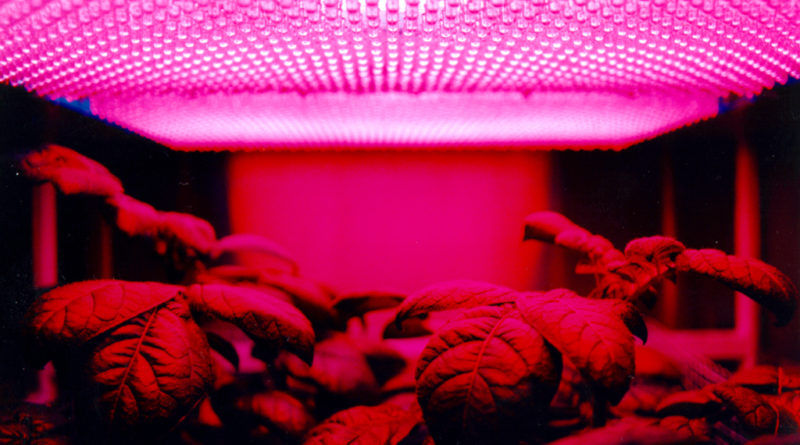Info You Should Know about LED Grow Lights
The acronym LED stands for “Light Emitting Diode.” Used in multiple numbers, these are small diodes in size. They are used in light bulbs, lamps, remote control bulbs, electronic appliances, digital watches, and to grow plants. They have a longer life and are highly efficient light sources. LED grow lights also serve the purpose of commercial indoor grow lights for large-scale indoor grow operations.
In an indoor setup, special LED lights accelerate the growth of plants. This is especially suitable in areas or regions that experience longer winters. If you are planning to install these lights in your indoor grow space, read below to learn some of the advantages of using LED grow lights.
The Advantages of LED Grow Lights
When you turn to Dorm Grow LED grow lights, you will enjoy various advantages that these powerful lights have to offer. The main advantages are:
- Efficiency
LED grow lights emit Photosynthetically Active Radiation (PAR) light, which serves the purpose to offer better results and greater efficiency. In indoor growing projects, these lights help to accelerate the vegetative and flowering stages, because the wavelength these lights provide to meet the exact requirements of plants. To conduct the process of photosynthesis, plants actually require a specific wavelength.
The traditional white fluorescent bulb does not provide the right wavelength for plants, which can hamper their growth. HPS and metal halide bulbs are very costly as they waste a great deal of electricity and emit an enormous amount of excess heat. With a formulation in right ratios, LED grow lights give the right blend of wavelengths, mainly blues, oranges, and reds in ranges of 420-470nm. High-quality brands such as G8 LED grow lights also blend in a perfect amount of ultraviolet and infrared light for resignation, to increase the formation of trichomes on plants. These lights go through optimal changes and formulations to provide the right blend of ratio, suited for the indoor growing of plants.
- They Conserve Energy
One of the major advantages of these lights compared to others is their low consumption of electricity, 50-60% less. In addition, they give off 90% less heat compared to other bulbs. When you choose LEDs for your indoor growing projects, your grow room has the advantage of low electrical consumption and no excess heat. This quality also helps to reduce the damage it causes to plants. These lights are highly efficient and environmentally friendly. As you can see, LED indoor grow lights serve as the right solution for indoor growing.
- Less Emission of Heat
As mentioned above, these lights emit less heat and they will not burn or damage your plants. They feel warm to touch and they can produce less amount of heat, enabling you to place the plants closer to the grow light, which is the source of energy for photosynthesis. These lights are also ideal for plants that have higher humidity requirements. Since they give off less heat, they will not require watering as frequently. Another prominent advantage of these lights is that they do not add excess heat into the grow space. Meaning they will let you save more energy that you may have needed by HVAC systems to keep the temperature stable.
- No Deterioration or External Damages
LED lights are also shock resistant and they have fewer chances of burning out abruptly. A prominent feature of these lights is they last much longer than HPS and metal halide bulbs. The light will only fail when it dims over time and it will not burn out suddenly. In addition, the light is not fragile and can be used for many years if taken care of properly.
LED Grow Lights Results
Here are some interesting facts you should learn about these lights.
- Better Plant Growth Results
LED grow plants will enable you to grow different flowers, plants, and vegetables in your home. A few of these include lettuce, tomatoes, cilantro, peppers, thyme, orchids, parsley, cannabis, etc. They allow you to grow plants affordably and effectively indoors. High-quality lights such as G8 LED grow lights also improve the quality of the plants grown due to their optimal lighting blend. The plants will look healthier, smell better, and have more taste.
- Red and Blue Lights
These lights when balanced out optimally can help you to achieve better results. They help plants in photosynthesis and they stimulate growth. Plants will first absorb red spectrum light for photosynthesis, but a combination of both will help the full growth of flower or flower-bearing plants. In addition to red and blue wavelengths of light, the plants need oranges, violets, far-red and ultraviolet light.
- They Help Flowering and Vegetative Stages in Plants
LED grow lights actually work well to ensure optimal growth and yield of plants during these stages. During the vegetative growth, you have to avoid over watering the plants. In addition, you have to expose the plants to at least 16-18 hours of light. This light cycle will help to create a similar environment like sunlight we have in summer days. The plants can also reap several advantages in this stage to get the best healthy plants. Know that during this phase, you can even save more, since plants will require less light here compared to flowering stages.
On the other hand, flowering in plants occurs during fall, a time after summer period. These lights will mimic the light seasons and you will have to change it to about 12-18 hours in a day. In the first two weeks, you can give your plants 12 hours of constant darkness and 12 hours of light. Note that during this phase, adding more light to your plants will often lead to better yields. A tip here is to add the best LED grow light such as 90-Watt red flower booster. Keep in mind that you will also have to check the nutrients, where you will need to monitor the plants with less nitrogen and more of potassium.
As you can see, LED grow lights serve well for indoor plant growth. You can use these for large-scale cultivation, or personal projects at home. The next time you wish to grow indoors, turn to these environmentally friendly solutions, and you will be happy with the choice you made.

